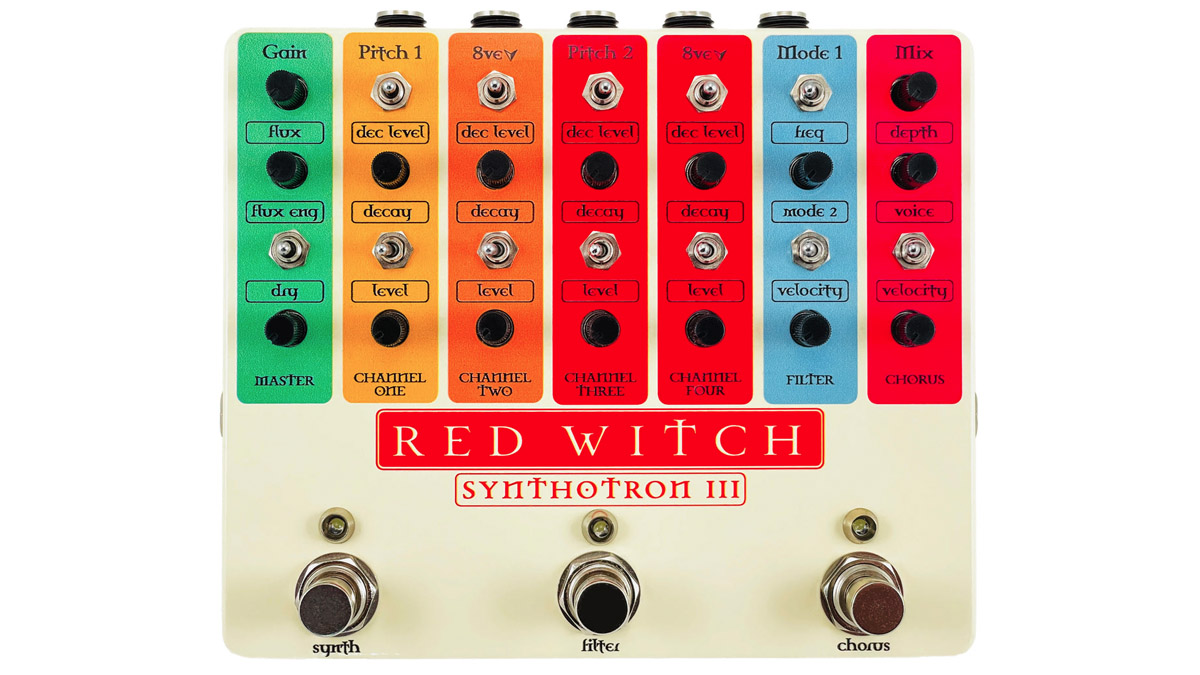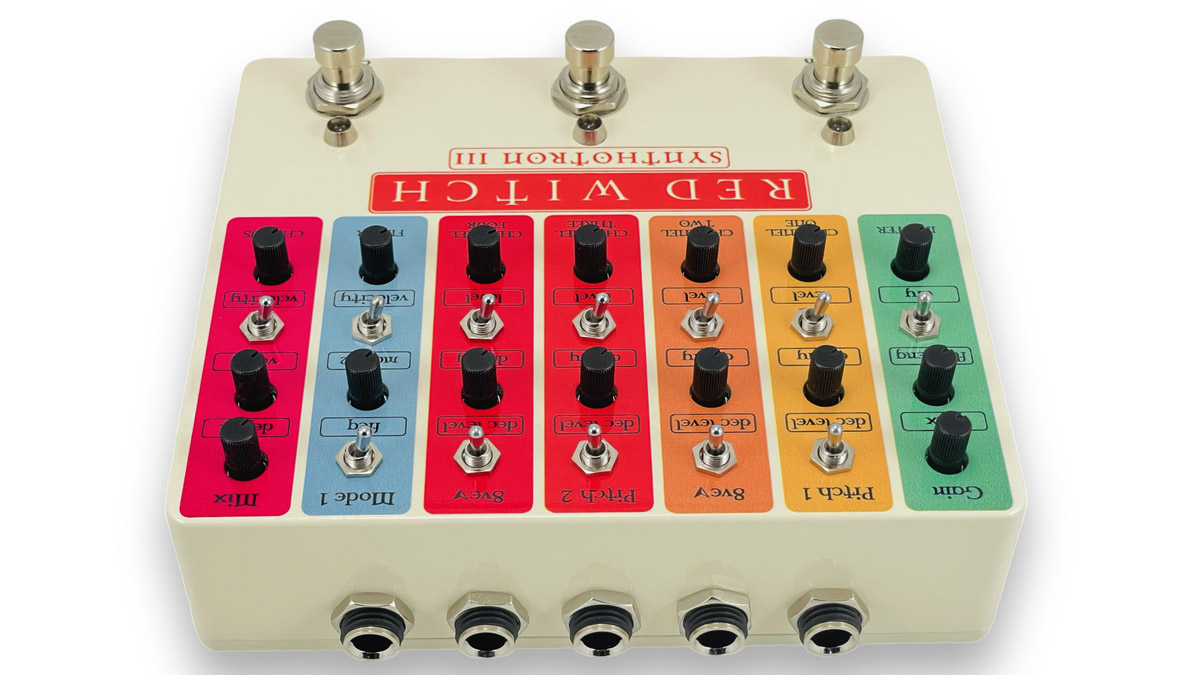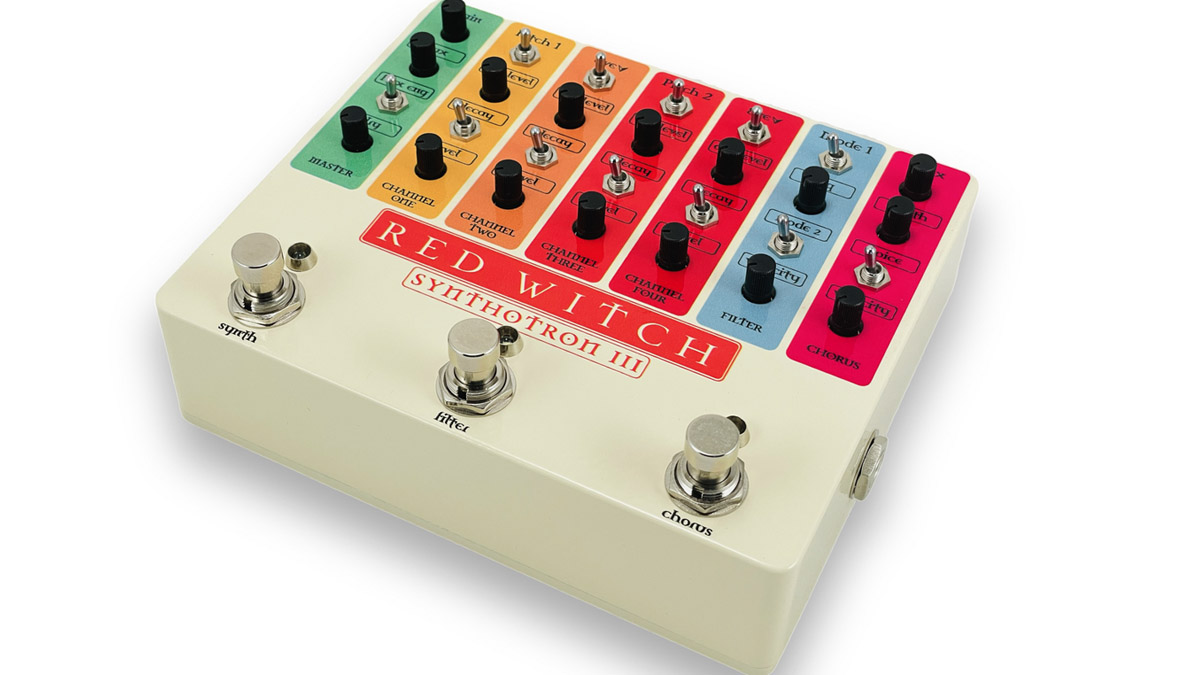“This is the only pedal in the world that can create these sounds”: Red Witch launches the expanded Synthotron III, an all-analogue workstation for synth, envelope filter and chorus
A pedal for the serious tone-seeker, the Synthotron III combines a four-voice monophonic guitar synth with envelope filter, sample and hold and a BBD chorus
Red Witch Pedals has rolled out the newly expanded and “vastly improved” Synthotron III, a 100 per cent analogue guitar synth pedal with envelope filter and BBD chorus sections for those occasions when you want to take your electric guitar tone off the map.
This, says Red Witch’s owner and designer Ben Fulton, is not your common or garden synth pedal. “The Synthotron III is the most unique sounding pedal I have ever created,” said Fulton, and he is surely as good as his word here; even the Synthotron II looks like a straightforward, vanilla pedalboard choice when compared to this.
Fulton says previous editions of the Synthotron had charmed some, flummoxed other, but this was an opportunity to redesign the unit and expand its functionality. Something for everyone, so long as that certain something is pretty darn weird.
“Synthotron III offers all the things people loved about it’s predecessors, but a vastly improved and expanded design,” continued Fulton. “This is the only pedal in the world that can create these sounds.”
And in an era of clone proliferation, a little originality is to be welcomed. So what have we got? Well, a lot, so much that Fulton has anticipated a raft of questions about the unit and its functionality – and at £599, it is a premium piece of kit – and duly shot an introductory video to walkthrough its features, which you can view above.


Essentially, the Synthotron III is divided into three different sections, Synth, Filter and Chorus, each with its own footswitch. There’s also an expression pedal input that can perform such tasks as switching between Sample and Hold, Envelop Filter and Manual Sweep modes in the filter section. There are CV and external trigger inputs, and there is an external dry output so you can send one processed signal with the synth to one amp, your dry guitar signal to another.
Of the three sections, the Synth has the most going on, with four monophonic guitar synth voices to work with, each with their own colour-coded strip, and a toggle switch for selecting the pitch that the synth voice will generate, with various intervals, octave up and down and unison pitches available.
Get the MusicRadar Newsletter
Want all the hottest music and gear news, reviews, deals, features and more, direct to your inbox? Sign up here.
To which, you can adjust decay and tailor it to your needs; it could be brisk for a clean staccato performance, or you can max it out so there is infinite sustain on the notes. Just imagine, the possibilities are endless. The Flux control allows you to control the response when playing notes, changing how it reacts to your glissando slides and whatnot, which are some of the tactile practicalities to consider when deploying a synth pedal.

The Filter and Chorus sections are coded blue and magenta respectively and once more present players with no shortage of options. The Filter section has toggles for mode, with Velocity and Freq dials controlling the speed and frequency range of the filter.
Red Witch looked to its Empress Deus chorus pedal for the Chorus mode, and so under the hood we have an MN3007 bucket brigade chip that facilitates old-school CE-1 warmth or a brighter voicing, and there are Velocity and Depth controls, with Mix controlling your wet/dry mix.
That’s a lot of sonic potential. You can hear Fulton demoing them up at the top of the page. You can find out more and order the Synthotron III at Red Witch Pedals.
Jonathan Horsley has been writing about guitars and guitar culture since 2005, playing them since 1990, and regularly contributes to MusicRadar, Total Guitar and Guitar World. He uses Jazz III nylon picks, 10s during the week, 9s at the weekend, and shamefully still struggles with rhythm figure one of Van Halen’s Panama.
“A fully playable electro-mechanical synth voice that tracks the pitch of your playing in real time”: Gamechanger Audio unveils the Motor Pedal – a real synth pedal with a “multi-modal gas pedal”
“Instead of labouring over a perfect recreation, we decided to make an expanded counterpart”: Chase Bliss teams up with Mike Piera for Analog Man collab based on the legendary King Of Tone










